Abstract
Seventy strains of fermentative, asporogenous, gram-positive coccobacilli or short rods form two closely related groups which have been designated CDC fermentative coryneform groups 3 (32 strains, xylose fermenters) and 5 (38 strains, xylose nonfermenters). The two taxa are otherwise similar to each other phenotypically and culturally and by a distinctive Staphylococcus-like odor and by cellular fatty acid (CFA) composition. CDC group 3 and CDC group 5 strains have been isolated from clinical sources (blood, abscesses, and wounds but not urine or respiratory specimens) in Canada and the United States and among referrals from Belgium, Sweden, and Spain. Coryneform CDC group 3 strains were phenotypically similar to CDC coryneform group A-3 but were distinguishable by their inability to reduce nitrate and by their lack of motility. Coryneform CDC group 5 isolates were phenotypically somewhat similar to Actinomyces viscosus and Rothia dentocariosa, except that none of this group reduced nitrate. Both CDC groups could be differentiated from these similar bacteria by the ability to decarboxylate lysine and ornithine. The CFA compositions of CDC group 3 and 5 strains were similar to each other, were distinctive from those of other coryneforms, and were of the branched-chain type. API CORYNE codes were consistent for both CDC group 3 and CDC group 5 bacteria, suggesting that this method could be useful as an identification method.
Full text
PDF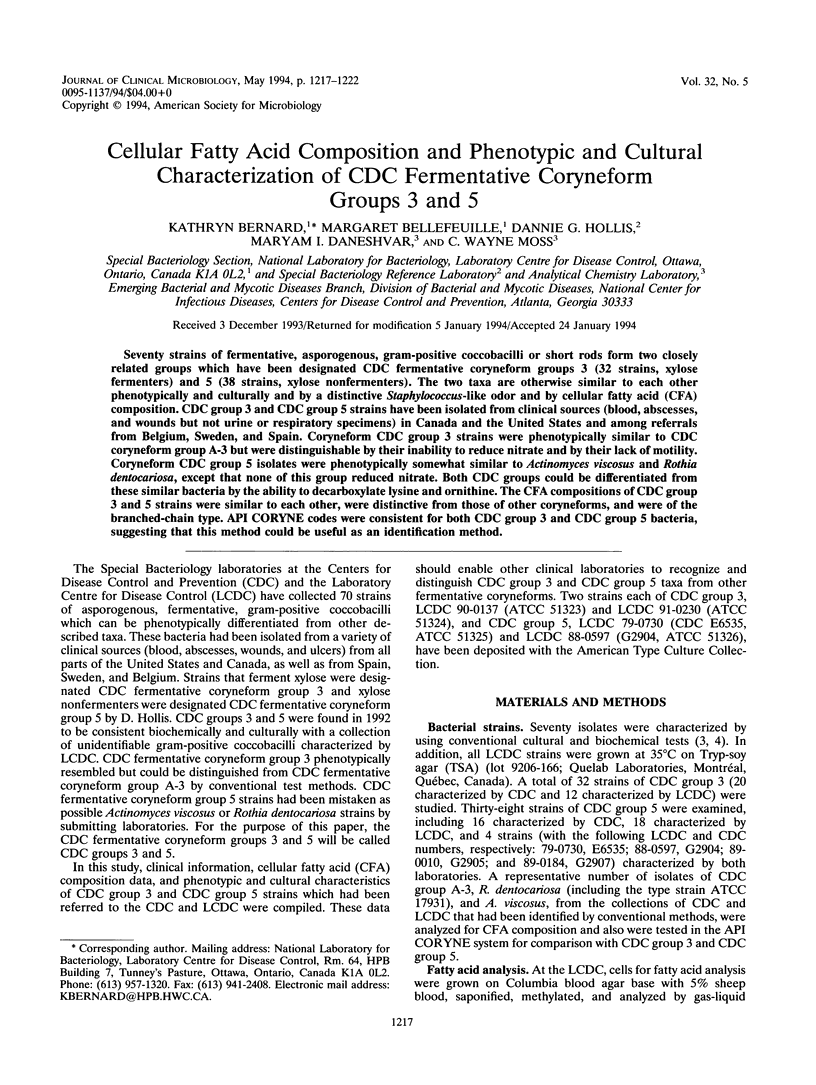
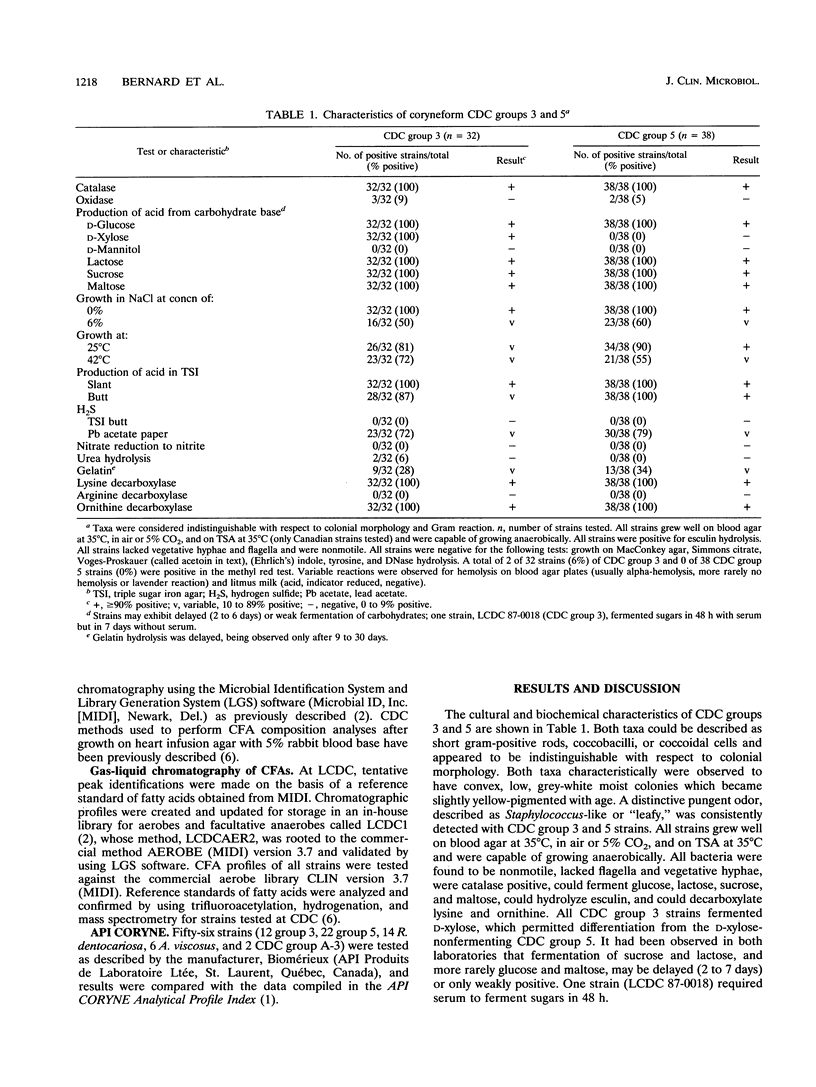
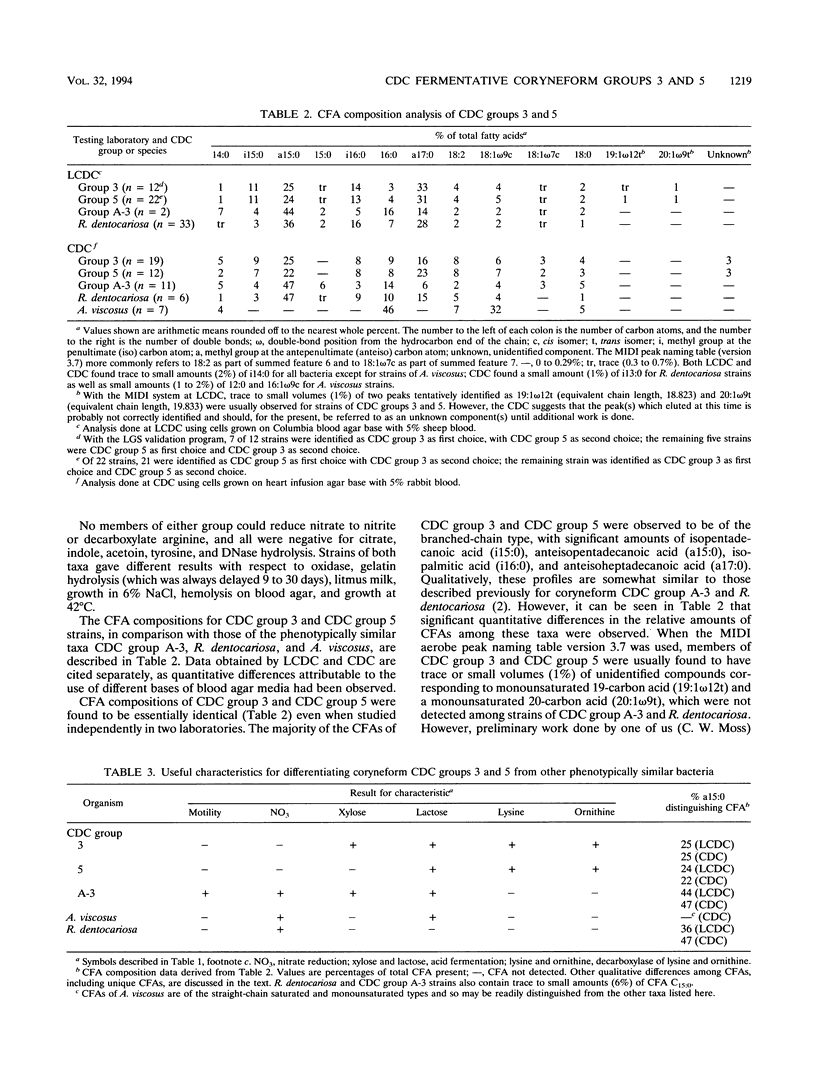
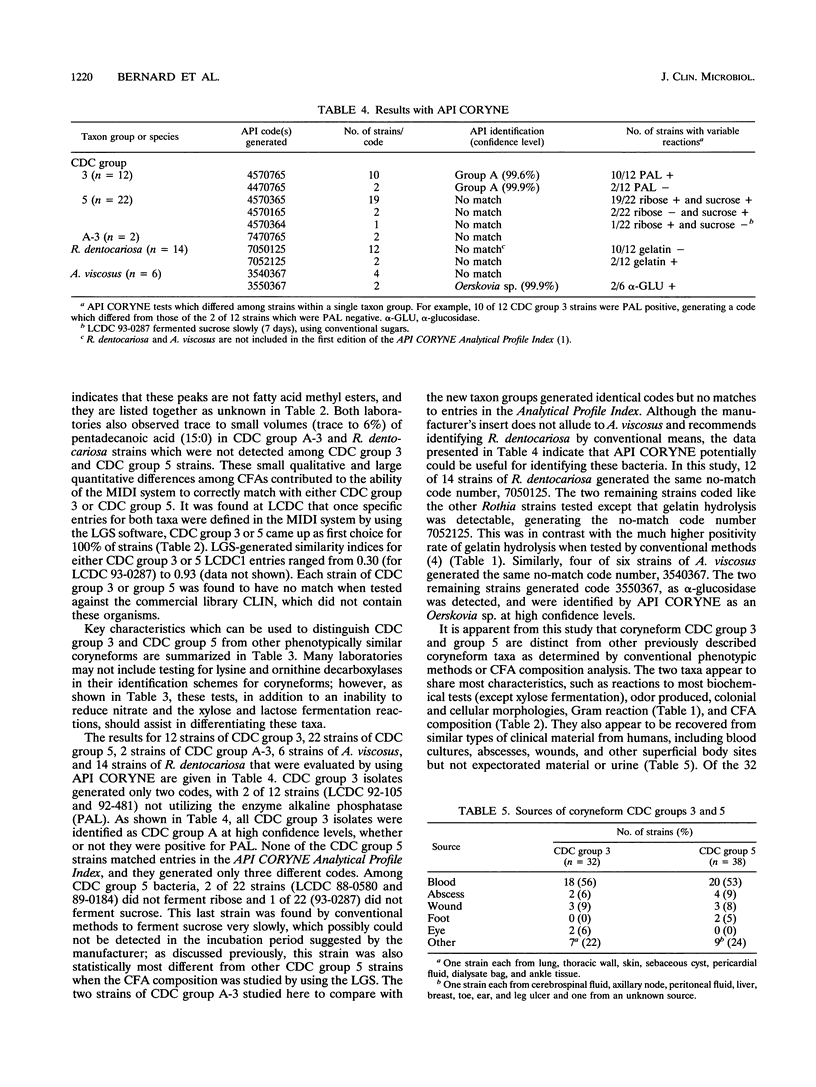
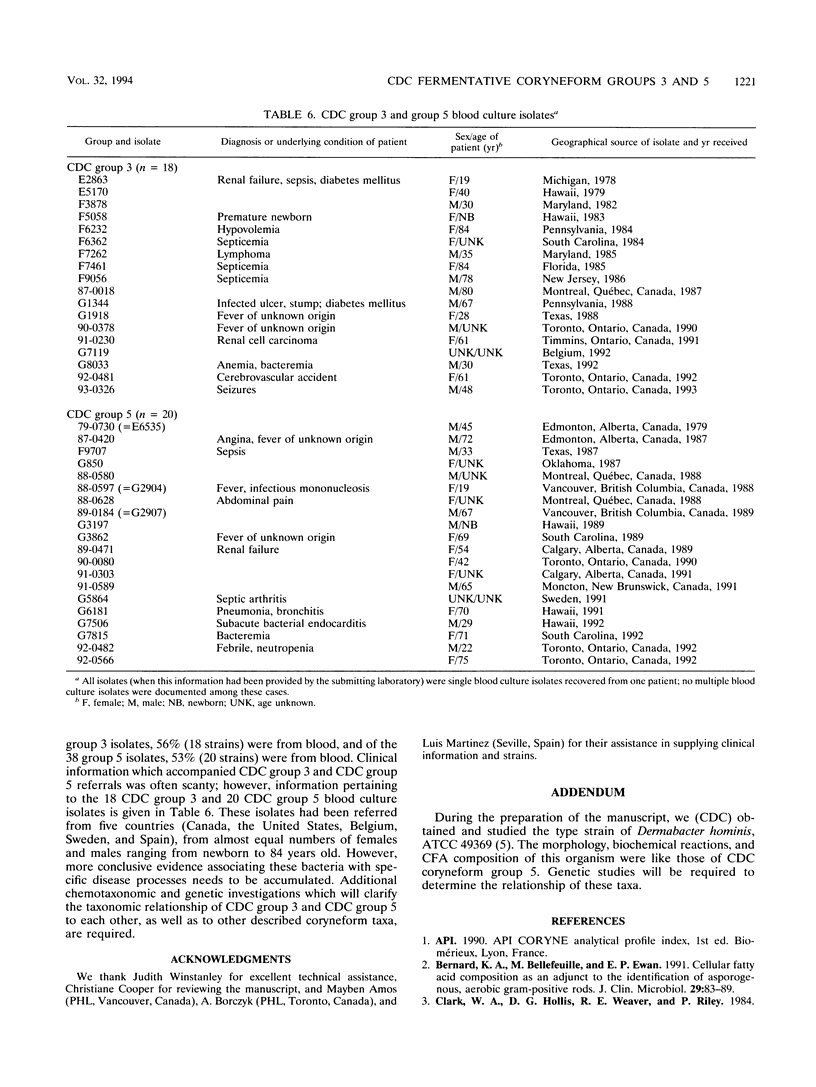
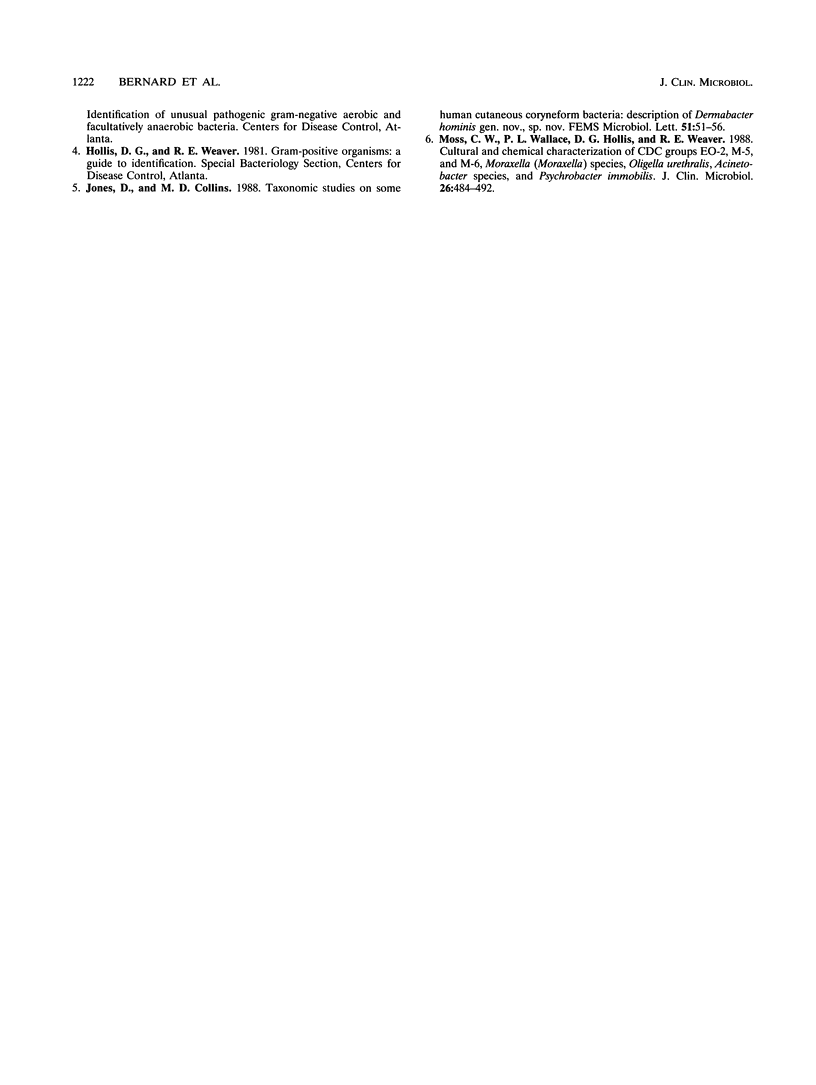
Selected References
These references are in PubMed. This may not be the complete list of references from this article.
- Bernard K. A., Bellefeuille M., Ewan E. P. Cellular fatty acid composition as an adjunct to the identification of asporogenous, aerobic gram-positive rods. J Clin Microbiol. 1991 Jan;29(1):83–89. doi: 10.1128/jcm.29.1.83-89.1991. [DOI] [PMC free article] [PubMed] [Google Scholar]
- Moss C. W., Wallace P. L., Hollis D. G., Weaver R. E. Cultural and chemical characterization of CDC groups EO-2, M-5, and M-6, Moraxella (Moraxella) species, Oligella urethralis, Acinetobacter species, and Psychrobacter immobilis. J Clin Microbiol. 1988 Mar;26(3):484–492. doi: 10.1128/jcm.26.3.484-492.1988. [DOI] [PMC free article] [PubMed] [Google Scholar]


